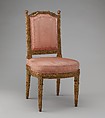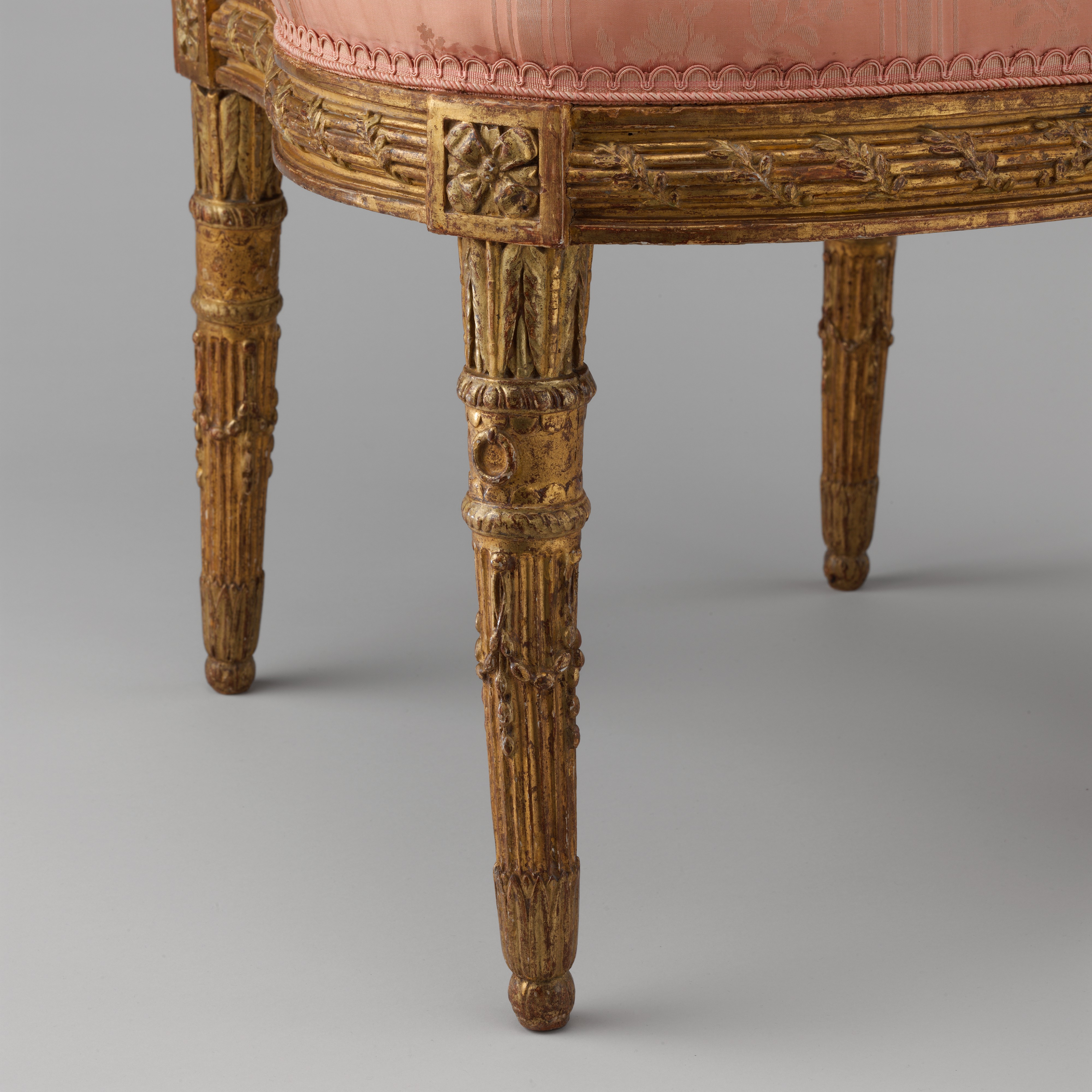Side chair (chais à la reine) (one of a pair)
"At eleven o’clock set out for the Thuilleries, to see the balloon go off; we soon quitted the coach, and it was with the greatest difficulty we got through the crowd on the Pont-royal to the little garden door. It was not long afterwards, that the Duke of Cumberland was in danger of being squeezed to death, as announced in all the public journals. The Queen of France sat in the balcony in front of the Thuilleries, appeared serious, and our party remarked, that she looked like a very handsome English woman. As soon as the aëronauts had taken their flight, I quitted the gardens." In his diary entry for December 1, 1783, Joseph Cradock (1742–1826) refers to the many spectators who watched a historic event take place that day: the first manned hydrogen balloon flight. The aeronauts Jacques-Alexandre-César Charles (1746–1823), a physicist, and his collaborator, Marie-Noël Robert (1760–1820), took off from the gardens of the Tuileries in a gondola suspended from a netted hydrogen balloon.
Balloon-shaped and carved with netting, the finials of these side chairs, supplied for the queen’s boudoir at the Château des Tuileries in February 1784, celebrate Charles and Robert’s successful flight. Georges Jacob, one of the outstanding menuisiers of the ancien régime, provided the walnut frames, which he described as “of a new shape,” possibly referring to the arched top rail or the seat shaped like a horseshoe. The brothers Rousseau, who were decorative painters as well as sculptors, executed the delicate carving, each element of which is carefully detailed in their 1784 invoice. The chairs’ legs have the form of arrow-filled quivers, and the uprights of the back are shaped like fasces, or bundles of rods tied with ribbon, which symbolized power or authority in classical antiquity. The now little-known Presle, who advertised as “painter and gilder to the king,” gilded the frames. For certain details of the carving, such as the myrtle branches on the seat rails, a clear greenish tone of gilding was chosen to subtly contrast with the yellow gold used elsewhere.
Due to rights restrictions, this image cannot be enlarged, viewed at full screen, or downloaded.
This artwork is meant to be viewed from right to left. Scroll left to view more.




